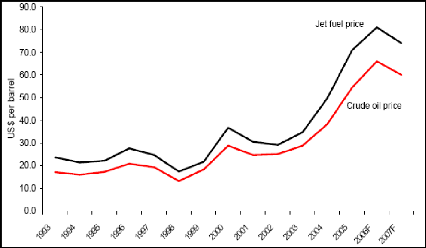Chapter 1 : Introduction to Thesis
The aim of this chapter is to introduce the research topic and to
present the objectives and the methodology used to respond to the research
question.
1.1. Background
Agency for Air Navigation Safety in Africa
(ASECNA1) is a regional publicly held establishment that provides
navigation services to 15 West and Central African Countries2, plus
Madagascar and the Comoro islands in the Indian ocean.
The region is relatively poor. Economic characteristics are those
of developing countries. Some of the less advanced countries are located
there.
ASECNA covers an area of 16 million square
kilometres3, most of which is unoccupied and dominated by the Sahara
desert, oceans and forests.
The Air Transport Industry has changed significantly over the
past decade. These changes were dictated by a combination of factors, mainly
operational and financial, following a succession of crisis4. The
airline industry is increasingly sensitive to the cost of doing business.
Efficiency
Air carriers demand direct routes, flight level optimization,
efficient in-flight and improved en-route fuel5 consumption. Figure
1.1 below shows the projected upwards evolution of crude oil prices. That means
airlines' fuel bill will significantly increase. Cost reduction is one aspect
of mitigating the effects of fuel high price. It explains why airspace users
want more efficiency. It is one of the factors that led them
to incite suppliers, such as air navigation service providers (ANSP) to improve
their effectiveness and the quality of service provision.
1 In the present study designates both the agency or the
geographic region
2 Benin, Burkina Faso, Cameroon, Central African Republic, Chad,
Congo Brazzaville, Equatorial Guinea, Gabon, Ivory Cost, Mali, Mauritania,
Niger, Senegal, Togo. France is also an observer member.
3 Equivalent to almost 66 times Great Britain size.
4 September Eleven, SARS, Bird Flu, Second Golf War...
5 Crude oil price was around 50 dollars per barrel in 2005
Figure 1.1: Short-term evolution of crude oil
prices

Source: IATA, 2006
Capacity
Air travel and air traffic are continuously growing. The
number of aircraft movements has increased by 5.3 per cent per year on average
over the past 15 years in ASECNA region, which is in line with worldwide
trends. The growth is forecast to continue at an estimated yearly pace of 5 per
cent. That activity means an increasing pressure will be put on airports and
air navigation systems, which may raise airspace and airport capacity
concerns.
Safety
Safety records are worrying in Africa. The
continent represents only about 3 per cent of global traffic.
Nevertheless, statistics show that almost one third of fatal
accidents over the past ten years occurred in Africa according to
IATA.
Air Transport is a catalyst for development and trade.
Efficiency, Capacity and Safety of air navigation systems are
therefore strategic components for a viable regional6 air transport
industry and growing national economies.
The important question is whether ASECNA will manage to
overcome the current and future challenges. Will they respond to users'
requirements while delivering a safer service, in the interest of regional air
transport?
The agency has embarked on a modernisation programme since
1994. It is implementing modern air navigation systems, known as Future Air
Navigation Systems (FANS) or CNS/ATM (Control, Navigation, Surveillance and Air
Traffic Management).
CNS/ATM systems are a complex and interrelated set of
technologies and concepts largely based on satellite communication. They are
the response brought forward by the aviation community, under the aegis of the
International Civil Aviation Organisation (ICAO), in response to the challenges
described above. Regional work groups have been put in place to coordinate
efforts. ASECNA is member of AFI7 Planning and Implementation
Regional Group (APIRG), which regroups African and Indian Ocean countries
The thesis intends to investigate current systems' performance
in ASECNA. It highlights regional shortcomings and needs, and examines the
agency's modernisation strategy, CNS/ATM adopted solutions, and their
implications on service provision for the next 15 years.
1.2. Research Questions
The main research question of the thesis is: Will ASECNA meet
the needs of African Air Navigation for the 21st Century?
Responding to that question requires that the following
intermediate questions are dealt with:
6 ASECNA region
7 Africa and Indian Ocean
1. What are the needs and the priorities of African Air
Navigation for the 21st century?
2. Are CNS/ATM systems the suitable tool with regard to regional
characteristics?
3. Will ASECNA's modernisation strategy respond effectively to
the needs?
1.3. Objectives
The objectives of the study are to:
1. Examine the state and the performance of air navigation
service provision in
ASECNA
2. Study the potential benefits of CNS/ATM systems to the
region
3. Analyse ASECNA's modernisation plans
| 


